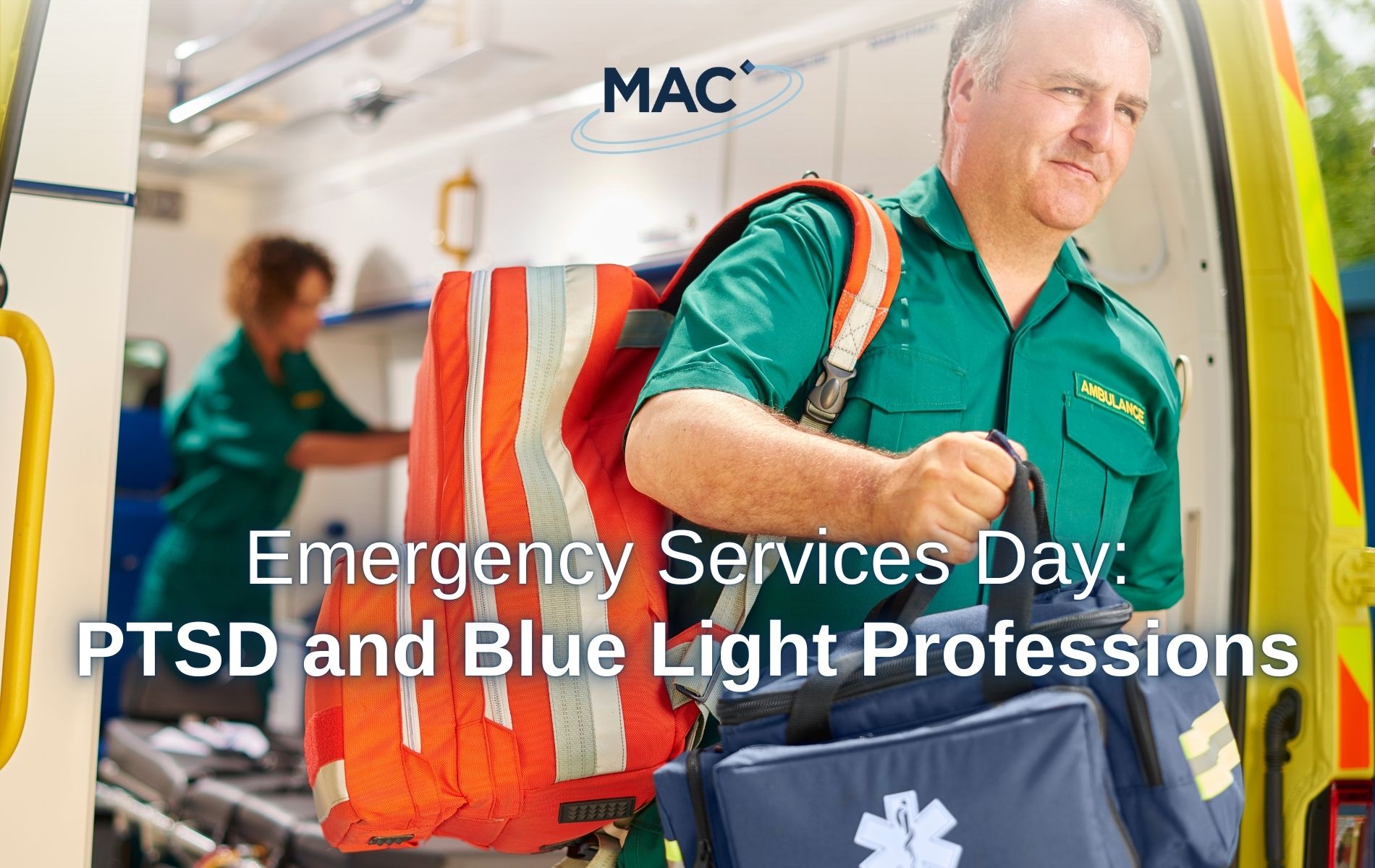Post-traumatic stress disorder (PTSD) affects one in ten people in the UK in their lifetime1. This risk increases with certain occupations, particularly those in the emergency services such as police, fire, and ambulance personnel2. Today, on Emergency Services Day, we are highlighting the impact of PTSD in ‘blue light’ professions.
Understanding PTSD
PTSD is a condition that can develop after witnessing or experiencing a traumatic event. A traumatic event provokes fear, helplessness, or horror in response to the threat of injury or death. While the experience of trauma is individual, frequent examples of traumatic events include assault, serious accidents or injuries, abuse, war or acts of terrorism, natural disasters, and sudden deaths3.
Unfortunately, 50 to 70% of people will experience such trauma in their lifetime and of those, around 33% will go on to develop PTSD, according to NHS estimates1.
PTSD typically manifests through four different groups of symptoms:
- Reliving the trauma through flashbacks, nightmares, and intrusive memories
- Feeling hypervigilant and afraid of the world
- Avoiding reminders of the event
- Negative changes in beliefs, emotions, and behaviour3.
After a traumatic event, many people experience negative emotions, difficulty sleeping and feeling on edge. However, if these symptoms persist and begin to interfere with day-to-day life, it might be PTSD.
PTSD and vicarious trauma
You do not need to be the victim of a trauma to develop PTSD; being a witness can also lead to post-traumatic stress. This is known as ‘secondary’ or ‘vicarious’ trauma. Vicarious trauma more commonly develops over time following repeated exposure to trauma events, for example, by listening to victims’ accounts, viewing distressing content, or responding to the aftermath of accidents or violent events4.
Not all responses to vicarious trauma equate to a clinical diagnosis of PTSD, so it’s important to distinguish between:
- Post-traumatic stress
- Compassion fatigue: your ability to empathise is diminished due to the physical, emotional, and psychological toll of assisting others
- Burnout: physical and emotional exhaustion due to feeling overwhelmed, dissatisfied, and powerless 4.
For many industries, work-related stress is common, but your mental health at work should be prioritised. If you find yourself experiencing these symptoms, you should consult your GP or a mental health professional who will be able to discuss your support options.
PTSD in emergency responders
Certain professions are more vulnerable to developing vicarious trauma. People in the emergency services, like police officers, firefighters, paramedics, and lifeboat crews, are at a higher risk for PTSD and C-PTSD than the general populace2. C-PTSD or complex PTSD shares symptoms with PTSD but also includes difficulties in managing emotions and having relationships5.
Around 20% of police officers and staff, ambulance personnel, and firefighters meet the criteria for or exhibit symptoms of C-PTSD or PTSD2. However, many may not be aware of their condition.
Up to 70% of people living with PTSD or C-PTSD do not receive professional help6. Some may recognise they are not coping well, but struggle to ask for help or help may not be readily available to them and may not know they have PTSD.
If they have received a diagnosis of PTSD, they may be unaware of the treatment options available. Others may have tried treatments but were discouraged if they found them to be ineffective6.
MAC Clinical Research is looking for people living with PTSD to participate in a future clinical trial. With your participation, you may be able to help people like yourself around the world.
To learn more about our current trials or to register your interest in this upcoming study, please visit our current trials webpage.
References
1 PTSD UK – PTSD Stats
2 PTSD UK – PTSD in Emergency Service Workers
3 PTSD UK – PTSD Explained
4 PTSD UK – Secondary trauma in occupations
5 NHS UK – Complex PTSD – Post-traumatic stress disorder
6 PTSD UK – About PTSD UK




